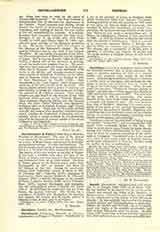

Castellanos, JUAN DE, b. in Spain in the first half of the sixteenth century; date of death unknown. He came to America previous to 1545 as a cavalry soldier, and acquired some means on the Pearl Coast. Abandoning the military profession he became a secular priest at Cartagena and, declining the dignities of canon and treasurer, went as curate to Tunja on the Colombian tableland. There he composed his epic poem, “Elegias de Varones ilustres de Indias”, the first part of which appeared at Madrid in 1588, and the first three parts in 1837. The remainder of the work is still in manuscript. The Lenox Branch of the New York Public Library possesses a complete and handsome copy. The verse is better than that of Ercilla’s “Araucana”; it treats successively of the deeds of the principal Spaniards who distinguished themselves in America, beginning with Columbus, and is an invaluable source for the colonial history of northern South America, including many details of ethnography and ethnology.
Castellanos enjoyed the advantage of being among the earliest “conquerors”, and was acquainted with nearly every prominent leader of the time. He relies to some extent upon Oviedo for many details, stating that Oviedo communicated to him verbally what he knew by personal experience of the settlement at Cartagena. Castellanos’ poem is the second of a series of epic compositions in Spanish treating of the early colonization of America, Ercilla’s being the earliest in date of publication.
AD. F. BANDELIER

